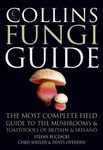![Biocommunication of Fungi Biocommunication of Fungi]()
Click to have a closer look
About this book
Contents
Customer reviews
Related titles
About this book
Fungi are sessile, highly sensitive organisms that actively compete for environmental resources both above and below the ground. They assess their surroundings, estimate how much energy they need for particular goals, and then realise the optimum variant. They take measures to control certain environmental resources. They perceive themselves and can distinguish between `self' and `non-self'. They process and evaluate information and then modify their behaviour accordingly.
These highly diverse competences show us that this is possible owing to sign(aling)-mediated communication processes within fungal cells (intraorganismic), between the same, related and different fungal species (interorganismic), and between fungi and non-fungal organisms (transorganismic). Intraorganismic communication involves sign-mediated interactions within cells (intracellular) and between cells (intercellular). This is crucial in coordinating growth and development, shape and dynamics. Such communication must function both on the local level and between widely separated mycelium parts. This allows fungi to coordinate appropriate response behaviors in a differentiated manner to their current developmental status and physiological influences.
Biocommunication of Fungi will orientate further investigations on how fungal ecosphere inhabitants communicate with each other to coordinate their behavioral patterns and whats the role of viruses in this highly dynamic interactional networks. Additionally Biocommunication of Fungi will serve as an appropriate tool to transport an integrated depiction of this fascinating kingdom.
Contents
Preface
Introduction: Keylevels of Biocommunication in Fungi; Günther Witzany
Part I. Intraorganismic Communication
1. G protein Signaling Components in Filamentous Fungal Genomes; Jacqueline A. Servin et al.
2. The Glycogen Metabolism Regulation in Neurospora; Maria Celia
3. Epigenetic Regulation of Secondary Metabolite Biosynthetic Genes in Fungi; Robert Cichewicz
4. Genes from Double-Stranded RNA Viruses in the Nuclear Genomes of Fungi; Jeremy Bruenn
5. Signal Transduction Pathways Regulating Switching, Mating and Biofilm Formation in Candida albicans and Related Species; David R. Soll
6. Cell-to-cell Communication in the Tip Growth of Mycelial Fungi; Tatiana Potapova
7. Programmed Cell Death and Heterokaryon Incompatibility in Filamentous Fungi; Elizabeth A. Hutchison, N. Louise Glass
Part II. Interorganismic Communication
8. Communication and differentiation in the development of yeast colonies; Zdena Palkova, Libuse Vachova
9. Hyphal Interference: self versus non-self fungal recognition and hyphal death; Philippe Silar
10. Sexual Pheromones in the Fungi; Silvia Polaino, Alexander Idnurm
11. Thoughts on Quorum Sensing and Fungal Dimorphism; Kenneth W. Nickerson, Audrey L. Atkin
Part III. Transorganismic Communication
12. Metabolite-Mediated Interactions between Bacteria and Fungi; Danielle M. Troppens, John P. Morrissey
13. Viruses, Fungi and Plants: Cross-kingdom Communication and Mutualism; Rusty J Rodriguez, Marilyn Roossinck
14. Communication between plant, ectomycorrhizal fungi and helper bacteria; Aurelie Deveau et al.
15. Lipid-mediated Signaling between Fungi and Plants; Michael Kolomiets
16. Fungus development and reactive oxygen. hytopathological aspects; Andrey A. Averyanov et al.
17. Oxidative stress and oxylipins in plant-fungus interaction; M. Reverberi et al.
18. Oxylipins in Fungal-Mammalian Interactions; Katharyn J. Affeldt, Nancy P. Keller
19. Chemical Signals that Mediate Insect-Fungal Interactions; Drion G. Boucias et al.
Index
Customer Reviews
By: Günther Witzany(Editor)
343 pages, 8 colour & 17 b/w photos and illustrations
"This book provides information about the various patterns of communications. [...] This book further serves as a learning tool for research aspects in biocommunication in fungi. It will guide scientists in further investigations on fungal behavior, how they mediate signaling processes between themselves and the environment. Should be available in all research laboratories dealing with mycology, community and university libraries."
– Anupama Daranagama and Kevin D. Hyde, Fungal Diversity, December, 2014




































